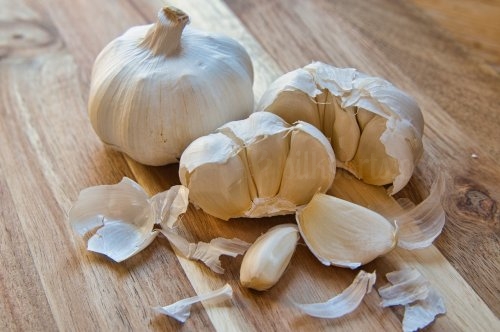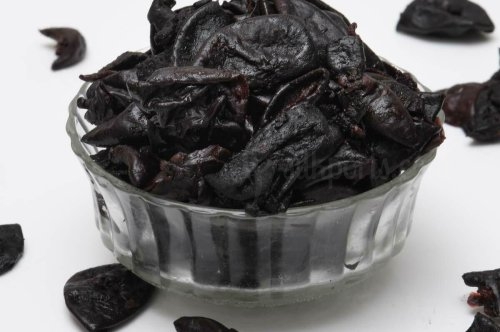
What is Cinnamon?
Cinnamon is a spice obtained from the inner bark of several tree species from the genus Cinnamomum. Cinnamon is used mainly as an aromatic condiment and flavoring additive in a wide variety of cuisines, sweet and savory dishes, breakfast cereals, snack foods, teas, and traditional foods. The aroma and flavor of cinnamon derive from its essential oil and principal component, cinnamaldehyde, as well as numerous other constituents including eugenol.
Only a few Cinnamomum species are grown commercially for spice. Cinnamomum verum is sometimes considered to be "true cinnamon", but most cinnamon in international commerce is derived from the related species Cinnamomum cassia, also referred to as "cassia".[1][2] In 2018, Indonesia and China produced 70% of the world's supply of cinnamon, Indonesia producing nearly 40% and China 30%. Also Srilanka growing Cinnamon.
Cinnamon is thought to have many medicinal and soothing properties, and is used frequently in Chinese herbal medicine. The distinctive smell and flavour of cinnamon derives from the essential oils contained in the bark, called cinnamaldehyde.
There are four types of cinnamon that are commonly used for commercial purposes – Ceylon cinnamon, Korintje cinnamon, Cassia cinnamon, and Saigon cinnamon.
01. Ceylon Cinnamon
Often called true cinnamon, Ceylon cinnamon, or soft cinnamon, this variety is native to Sri Lanka and Southern India, but is widely grown in Mexico and East Africa. It is also sometimes called soft cinnamon because of its soft texture.
02. Cinnamomum burmannii (Korintje Cinnamon)
Sometimes called Korintje cinnamon, this one is generally milder. It is very common in America — it accounts for close to 70 percent of North American cinnamon imports. Frisch describes it as "a friendly cinnamon that works for everything."
03. Cinnamomum cassia (Saigon Cinnamon)
This is most often found on supermarket shelves as Saigon cinnamon. It originates from Southeast Asia. It's pretty sweet, not super spicy. "Most of what's imported as Saigon cinnamon is actually Cinnamomum cassia, grown in Vietnam," says Frisch. "Saigon cinnamon is a misnomer because it was actually the trading point – there is no cinnamon grown near Saigon."
04. Royal Cinnamon
Sometimes called Royal cinnamon, this is harder to find on grocery store shelves, but spice purveyors often sell it. It's mostly grown in central Vietnam. "It's super sweet, super spicy," says Frisch, "Cinnamon amped up to 10."
How to growing Cinnamon
It’s important to keep in mind that cinnamon trees are native to tropical regions. Cinnamon plants can only truly thrive as outdoor plants in USDA Hardiness Zones 9–11. Otherwise, they’re best kept as houseplants, or kept outside only during the warmer months.
Look for a sunny spot. Plan to plant your cinnamon in spring or early fall in a spot that gets full sun (at least twelve hours a day). Your cinnamon plot should be at least four feet by four feet.
Dig a hole. Dig a one foot by one foot hole in the plot.
Prepare the bed. Fill the hole with a sandy, well-draining loam or potting mix with plenty of perlite. Cinnamon favors an acidic soil pH between 4.5 and 5.5, so work sphagnum peat moss into the mix if necessary to reach the right acidity level.
Plant transplants or seeds. If transplanting a young tree from a nursery, loosen the root ball, place the tree in the hole, and cover with the soil. If growing from cinnamon seeds, fill the hole first and bury the seeds half an inch below the surface.
Fertilize the bed. If transplanting, apply a slow-release fertilizer or layer of compost near the base of the plant. This is called side-dressing. You can skip this step and fertilize later if planting from seed.
Climate to growing Cinnamon
Cinnamon plants love a warm and humid climate. In their native habitat, temperatures that average 80 degrees Fahrenheit promote healthy growth. They don't do well when temperatures fall below 40 degrees Fahrenheit or in very dry conditions.
If you garden in a cold climate north of the plant's cold hardiness zone, you can grow cinnamon in containers in a greenhouse or keep the container outdoors during the summer months and overwinter it indoors as a houseplant.
Cinnamon Harvesting
You can harvest your cinnamon two to three years after planting and then every two years after that. Cut off individual branches, or cut the entire tree at the trunk. (Trees growing in the ground often produce new shoots that will become a new tree.) Scrape away the outer bark until you see the yellowish-orange layer beneath, which reveals the edible part of the plant. Peel strips of this cinnamon layer with a sharp knife or paint scraper, stopping when you see the lighter core.
Let the pieces dry indoors in a single layer for about a week. They will curl into the typical shape you see in cinnamon sticks. Then, you can grind them or leave them in stick form. Store your cinnamon in a sealed container in a cool, dry place, and it should keep for a couple of years.
Uses of Cinnamon
Cinnamon bark is used as a spice. It is principally employed in cookery as a condiment and flavoring material. It is used in the preparation of chocolate, especially in Mexico. Cinnamon is used in many different ways,
- Cinnamon Bark.
- Cinnamon Quill.
- Cinnamon Oil.
- Cinnamon Powder.
Cinnamon is often used in savory dishes of chicken and lamb. In the United States and Europe, cinnamon and sugar are often used to flavor cereals, bread-based dishes such as toast, and fruits, especially apples; a cinnamon and sugar mixture (cinnamon sugar) is sold separately for such purposes. It is also used in Portuguese and Turkish cuisine for both sweet and savory dishes. Cinnamon can also be used in pickling, and in Christmas drinks such as eggnog. Cinnamon powder has long been an important spice in enhancing the flavor of Persian cuisine, used in a variety of thick soups, drinks and sweets.
Cinnamon tea or cinnamon mixed with black and green tea can be a potent cure against cold and sore throat especially mixed with honey.
In addition cinnamon used for Alcohol flavoring.
Benefits of Cinnamon
Cinnamon has lot of benefits,
- Improving fungal infections.
- Influencing blood sugar levels.
- Preventing Alzheimer’s disease.
- Protecting against HIV.
- Preventing multiple sclerosis.
- Lowering the effects of high fat meals.
- Treating and healing chronic wounds.
- Preventing cancer.
- Reducing Acne
- Reduce Eczema
 English
English
 Russian
Russian  Arabic
Arabic  French
French  Español
Español  Turkish
Turkish  German
German 







